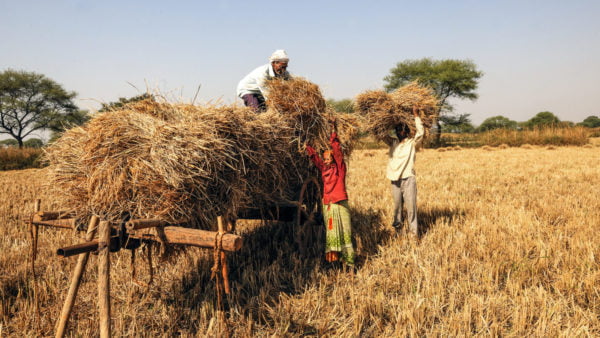Farmers’ Unrest – The Hidden Implications

Since the last few months, our country has been caught up in an unfortunate stalemate between farmers and the government.
While the hardships being faced by the protesting farmers on the outskirts of the national capital have helped them acquire the halo of David’s fighting the Government Goliath, the government’s intransigence in refusing to rollback the controversial laws is making it appear like a bad tempered bully, at least to international eyes
On the face of it both sides have the same objective – bringing prosperity to the Indian farmer.
The disagreement stems from lack of trust on the farmers side that firmly believes that the current laws have an underlying agenda to further the cause of corporate entry into agriculture, thereby causing more hardships to farmers. The fact that our political, legal and bureaucratic systems are heavily weighted in favour of the rich and powerful, is another major cause of the opposition to the new laws.
While there does appear to be a politicization of the issue, it cannot be denied that the farmers fears are founded on facts.
Risk is inherent in any business venture, more so in agriculture where success or failure of a crop is dependent on factors beyond the control of the farmer such as timely rains, floods, drought, cyclones, pest infestations etc.

Which is why, the assurance that the price of the crop will not be allowed to be decided by market economies and instead, a minimum price will be guaranteed, as is the system now, is a huge support, especially for small and marginal farmers.
But, when a corporate body is expected to invest in setting up infrastructure and other required facilities, it will expect that the price of the raw material (agricultural produce) is based upon the demand-supply scenario and not imposed on it by the government. Which is probably why, the government is reluctant to include MSP in the laws.
But why are we in a situation that requires a minimum support price?
The underlying cause for this is what can only be termed as the excess production capabilities in the agriculture sector, that has led to overflowing godowns of the Food Corporation of India and the resulting in unproductive blockage of funds in unnecessary foodgrain stocks.
And this brings us to the crux of the problem.
Contrary to the popular belief, the issue facing Indian farmers is not low efficiency or low productivity – it is overproduction, leading to excess supply with respect to the existing demand, thereby necessitating a minimum support price to ensure survival of the farmer.
Think about it – when did you last see a shortage of food grains in the country? The only shortages that we see are the seasonal onion, tomato or potato, which are then usually followed by excess production of the crop next season, with farmers dumping their crops on the streets in the absence of a viable price.
As of 2019, more than 65% of our population was classified as rural, as opposed to more that 80% in 1960 as per World Bank figures. However, while there has been a 15% decrease in rural population, in actual numbers, it has more than doubled, from around 37 crore in 1960 to around 89 crore in 2019.
FAO says 70% of rural households depend primarily upon agriculture for their livelihood, with 82% of farmers being small and marginal. Though there has been a decline in the percentage of rural households depending upon agriculture, assuming that the percentage is still the same as in 1960, it means that while around 26 crore people depended upon agriculture in 1960, now it has more than doubled to around 62 crore people.
What is more worrying is the fact that more than 80% of these, or around 50 crore are classified as small and marginal in other words those with less than 2 hectares of farmland. A deeper look shows that the average land holding of marginal farmers, who constitute around 65 per cent of total farmers in India, is less than one acre (0.4 hectares) and the average land holding of small farmers is around three acres (1.21 hectares).
Taking an average yield of around 1,000 kg of paddy per acre, after accounting for self consumption and other needs, marginal and small farmers have barely enough to sell.
Interestingly, it has been seen that as these marginal and small farmers are below the poverty line and are eligible for subsidised food grains, they sell their crop at the MSP and purchase food grains at Re 1 or Rs 2 per kg from the PDS shops.
Given these facts, it is apparent that to be able to increase, forget double, farmers incomes, traditional methods of increasing income through increasing productivity will not be effective.
Similarly, shifting to cash crops and other such methods too have not proved to be very successful.
Instead, it is necessary to decrease the number of people dependent upon agriculture as the primary source of income.
For this, we need to provide employment options to crores of people. Given the fact that our economy is unable to provide gainful employment to the existing participants in the job market, this is definitely a gargantuan challenge.
Which is why we urgently need to understand the deeper implications of the current farmer unrest and prepare ourselves for more such occurrences, as technology, especially the Artificial Intelligence and Machine Learning juggernaut, causes further disruption to the economy.
(The author is from the 1990 batch of XIMB and is currently Vice President of the XIMB Alumni Association)

Comments are closed.